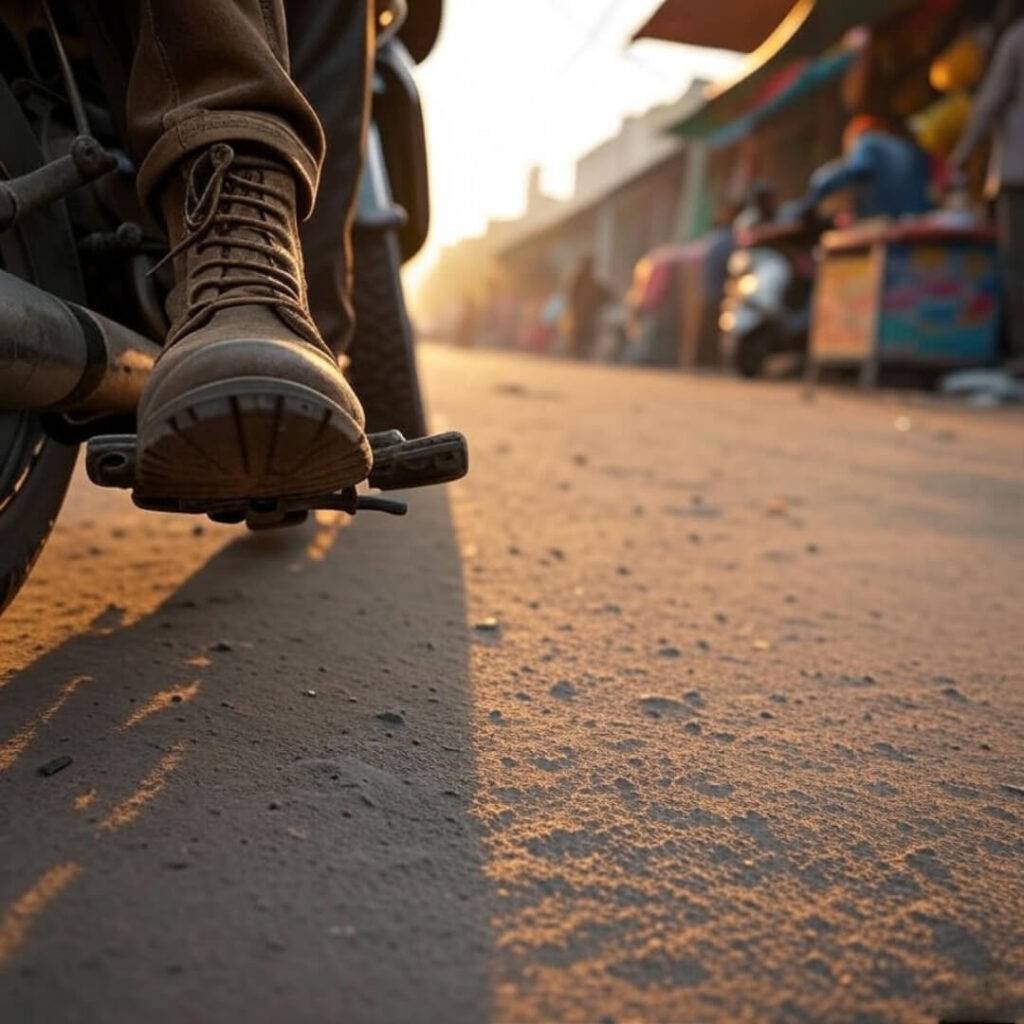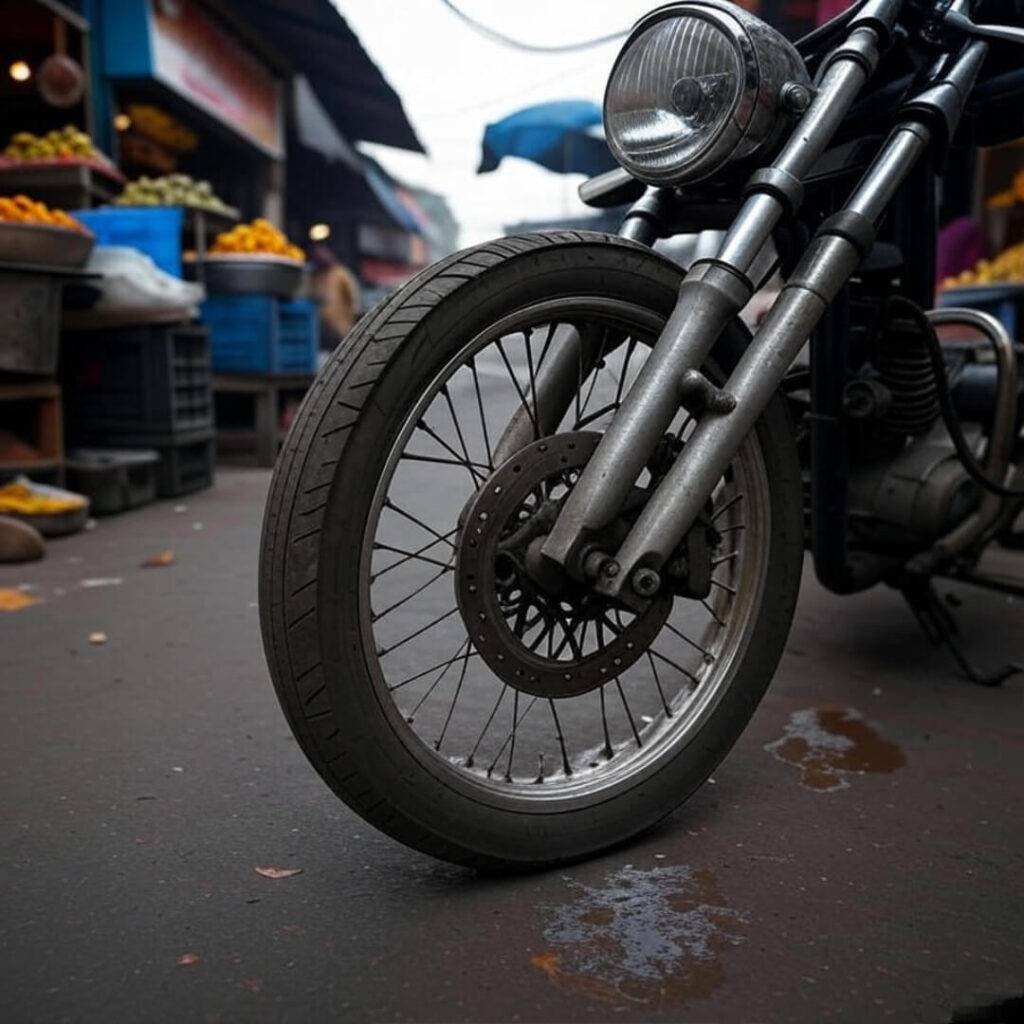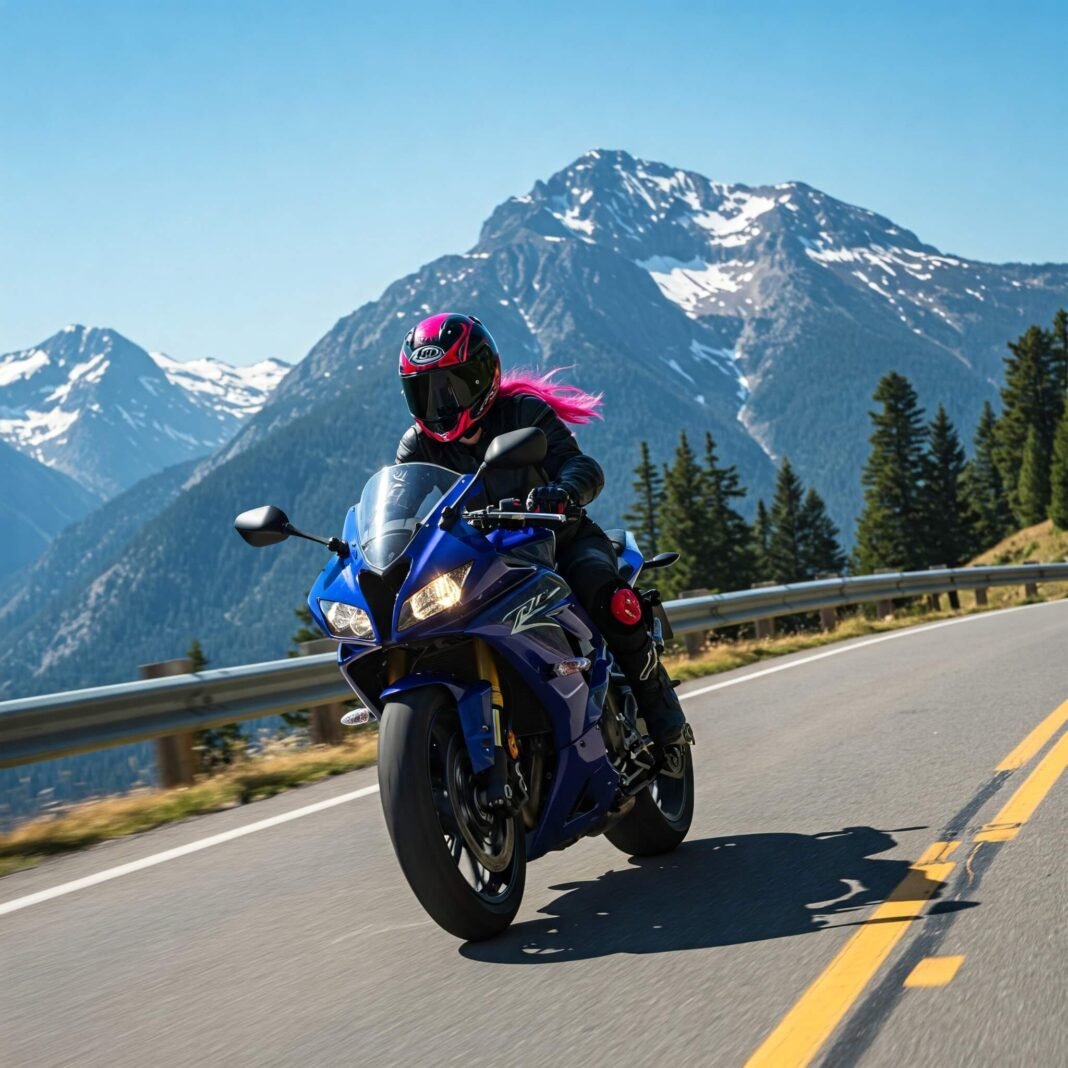Motorcycle riding techniques are, like, the difference between cruising like a boss and eating dirt, and lemme tell ya, I’ve come way too close to the latter on India’s insane roads. Right now, I’m scribbling this in a cramped Jaipur café at 6:48 PM IST, chai steam hitting my face, horns blaring outside like they’re in a shouting match. As an American fumbling through India’s traffic, I’ve learned beginner motorcycle tips the hard way—clammy hands, some wobbly-ass moments, and one super embarrassing stall in front of a cow that just glared at me. Like, that cow had zero chill, for real. So, here’s my messy, honest take on five motorcycle riding techniques for beginners, straight from my screw-ups and little wins.
Why Motorcycle Riding Techniques Are a Big Freakin’ Deal
Riding a bike in India? It’s like jumping into a chaotic video game where everyone’s an NPC with no sense of personal space. For starters, the roads are nuts—scooters weaving like they’re drunk, trucks barreling down, and people popping out like it’s a prank show. I learned fast that solid motorcycle skills aren’t just for looking cool (though, c’mon, that’s a bonus). They’re about not becoming roadkill or, worse, a viral X post for skidding into a ditch. Here’s my take, complete with my dumb mistakes.
My First Wobbly Rides in India
When I first started, I thought I’d be zipping through India’s streets like some action movie hero. Nope. Instead, I was a sweaty mess, barely keeping my bike upright. For example, my first week in Goa, I rented a Royal Enfield and thought I was hot stuff—until I stalled it in front of a crowd. That’s when I realized motorcycle riding techniques are what keep you from looking like a total noob.
1. Clutch Control: Don’t Be Me, Stalling in Public
Clutch control is, like, the motorcycle riding technique you gotta get right, or you’re screwed. My first ride in Goa? Total disaster. I yanked the clutch like I was arm-wrestling the bike, and it stalled right in the middle of a street, with a fruit vendor yelling at me to get outta the way. Here’s the deal: ease that clutch out slow, like you’re petting a nervous stray dog. For instance, find the “friction zone” where the bike starts inching forward. Practice in some empty lot—India’s got tons of dusty ones. Also, keep the revs steady, like 2,000 RPM, and don’t freak if you stall. I did. A lot.
- Why it matters: Smooth clutch means no jerky starts or public humiliation in traffic.
- My dumb moment: Revved too high, popped the clutch, and nearly launched into a chai stall. Facepalm.
- Check out CycleWorld’s clutch guide for the technical stuff I’m too flustered to explain right.

2. Look Where You Wanna Go (Not at the Damn Pothole)
This one sounds so stupidly obvious, but beginner motorcycle tips like “look where you want to go” legit saved my ass. For example, riding through Delhi, I fixated on a massive pothole and—yep—rode straight into it. My helmet rattled, and some auto driver laughed so hard he nearly crashed. Basically, your bike follows your eyes, so stare at the clear path, not the obstacle. It’s, like, life advice or something. So, keep your head up, scan the road, and pretend you’re a hawk dodging scooters and cows.
- Why it matters: Staring at stuff makes you hit it. I learned that the hard way.
- My cringe moment: I swerved toward a cow ‘cause I couldn’t stop gawking at its judgy eyes. Cow: unbothered. Me: mortified.
- Motorcycle.com’s vision tips breaks this down better than my rattled brain.
3. Brake Like You Mean It, But Don’t Be an Idiot
Braking is one of those motorcycle skills that feels easy until you’re skidding toward a fruit cart. In Udaipur, I panic-braked when a scooter cut me off, and my rear wheel locked up—cue me fishtailing like I’m in a low-budget action movie. To clarify, use both brakes, but ease into the front one (it’s got, like, 70% of the stopping power) and tap the rear lightly. Practice in a parking lot, not Mumbai rush hour. By the way, ABS? Lifesaver, but it won’t save your ego.
- My tip: Start light, then squeeze harder if you gotta. No death grips, please.
- My screw-up: Grabbed the front brake too hard and almost did a stoppie in front of a wedding parade. The music stopped; the stares didn’t.
- RevZilla’s braking guide is gold for newbies like me.

4. Lean Into Turns (But Don’t Overthink It, Okay?)
Leaning into turns is where bike handling gets fun, but it scared the hell outta me at first. On a twisty road in Rajasthan, I was so stiff I nearly rode into a ditch. Here’s the trick: push the handlebar on the side you wanna turn (countersteering, I think?) and let your body lean like you’re dancing with the bike. It’s awkward as hell at first, but you find the rhythm. For instance, start with gentle curves—India’s got plenty of those.
- Why it matters: Leaning keeps you stable, so turns feel smooth, not terrifying.
- My dumb moment: Froze mid-turn and almost hit a “Slow Down” sign. The irony hit harder than the sign would’ve.
- RideApart’s countersteering guide explains the physics I’m too clumsy to get.
5. Stay Chill in Traffic (Good Freakin’ Luck)
India’s traffic is a straight-up beast, and staying calm is the ultimate motorcycle riding technique. For example, in Bangalore, I got stuck between a bus and a herd of goats, sweating buckets and muttering curses under my helmet. So, breathe deep, keep a loose grip, and don’t tailgate. Also, watch for random lane changes—everyone here thinks they’re in a racecar. And if a cow plops down in the road? Just wait. It’s not worth the drama.
- My tip: Pretend you’re invisible; assume nobody sees you. Safer that way.
- My humbling moment: Honked at a rickshaw, only to realize it was a cop. He gave me a look like, “Chill, tourist, you’re not Vin Diesel.”
- CycleNews’ traffic tips helped me not lose my mind.

Wrapping Up My Wobbly Ride
Look, motorcycle riding techniques for beginners aren’t just about looking like a badass—they’re about surviving the learning curve without too many bruises. I’m still no pro, and India’s roads keep me humble as hell, but these five tips got me from stalling in front of judgy cows to cruising with a goofy grin. So, try ‘em, mess up a bit, laugh it off. Got your own rookie stories or beginner motorcycle tips? Hit me up on X—I’m @YankOnTwoWheels, probably tweeting about my latest near-miss with a rickshaw. Oh, and I might’ve spelled “technique” wrong earlier. Or was it “brake”? Whatever, I’m human.





